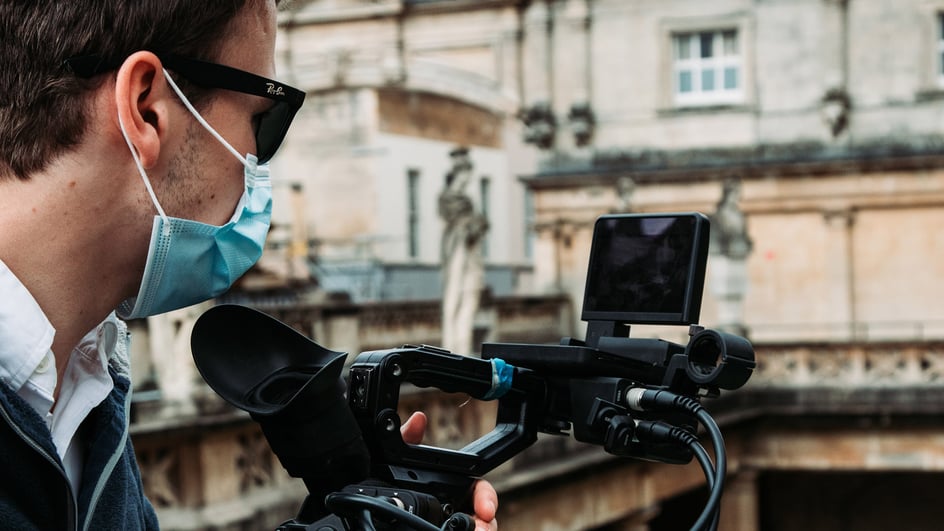
Sep 3, 2020
We all know this has been a year to forget.
I don’t need to enumerate all of the incidents that have seemingly combined forces to form the cascade of terribleness we refer to as 2020.
But the show must go on — where it’s able. Much of Hollywood spent the first half of this year on forced hiatus. Production on brand-name titans like Mission Impossible 7 and Thor: Love and Thunder were halted earlier this year.
Even theatrical releases of completed mainstream films are being pushed back because theaters are closed.
But the story isn’t quite the same for independent filmmakers. Free from the masses of workers who facilitate would-be blockbusters, indie films can be shot in ways that actually adhere to many safety guidelines.
Remember that indies are famed for their creativity, and you might see a glimmer of hope for smaller production films. But is that glimmer real, or just a trick of the eye?
Let’s look closer and see what 2020 has meant for the indie scene.
It goes without saying, but instituting safety guidelines is an absolute must for all filmmakers, independent or otherwise.
Without policies for testing, social distancing, and other COVID-saftey hallmarks, you simply won’t get approval to shoot on location. You could always run a covert shoot, but that doesn’t seem like the most responsible thing to do.
Unfortunately, safety is expensive. Instituting the necessary safety policies can increase a film’s budget between 20 and 40 percent.
Floyd Russ, a filmmaker based in Los Angeles, decided to save costs by assuming the role of chief medical officer while shooting his indie Avar. Russ sourced 30 COVID-19 tests and administered them to the cast and crew throughout filming. He even hired someone to monitor whether or not people were taking appropriate caution and following the policies.
Even among contract filmmakers and videographers, safety has become the priority. In a recent survey, Storyhunter found 68% of video production freelancers have their own set of COVID-19 policies ready to roll.
Even with stringent safety protocols in place, there is no such thing as a risk-free production. Each and every production brings inherent risk, and that’s something filmmakers have to make peace with.
Something you can (and should) always do is provide information about nearby medical facilities, safety measures, and health resources to your cast and crew via your call sheets.
For many filmmakers, the ubiquity of COVID-19 has smothered projects they had planned before the pandemic. The fundamental change to society left no room for anything other than an examination of life during the novel Coronavirus.
Earlier this year, documentarian Matt Schacht began work on a film commemorating the 50th anniversary of the Missouri Symphony. COVID struck in the middle of filming, so Schacht pivoted the focus from the past to the present.
Instead of an homage, the film became an examination of how the musicians of the Missouri Symphony kept working in the shadow of the pandemic.
Meanwhile, New York director Onur Tukel planned to make a movie set in pandemic times from the beginning. “Scenes From an Empty Church” is a black comedy that follows mask-clad priests working through some existential dread during a pandemic. The actors remain decked out in PPE for much of the movie and practiced social distancing.
“We wanted to capture what we’re all going through,” Tukel told IndieWire. “We were cautious, but it felt like — not to be overly dramatic — if we’re risking our lives to do this, let’s take it seriously and make it good.”
Perhaps during certain moments in history, the inescapable weight of now simply exerts too much creative gravity to ignore. Like it or not, COVID-19 has that pull.
When productions need to stay lean, indie films have an obvious advantage — the smaller, the better.
In a webinar addressing the current challenges of making films, attorney David A. Pierce covered how independent productions have advantages over big-budget shoots during the pandemic.
“Here’s where you — the independent filmmaker — actually have a leg up on the studios. You do not have the hurdles and impediments of the majors, and many majors are facing this issue.”
He’s right: ultra-efficient application of budget and resources has always been an advantage for indie filmmakers. Sure, there’s a tremendous amount of stress that comes with the territory, but there’s also an agility and freedom that comes with these types of constraints.
During a pandemic when large gatherings are essentially prohibited, filming with a small crew becomes an ace in the hole.
Independent filmmakers haven’t escaped the effects of COVID-19, but by some accounts they are weathering the storm better than the leviathan studios. Every production is a risk of course, but that imminent danger seems to be driving these filmmakers to produce even better work.
Regardless of where the film industry goes next, indie productions are proving they’re resilient enough to continue producing quality work even when the rest of the industry remains gridlocked.
This post was written in collaboration with Bounce Color, a supplier of professional grading tools, LUTs, and other filmmaking essentials.